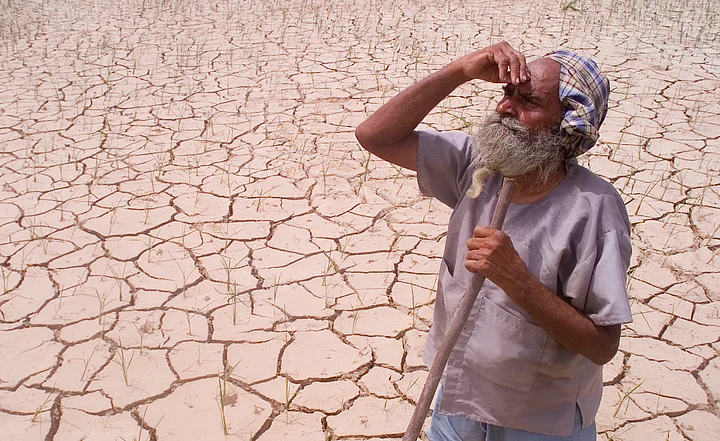Lean, intense and troubled, pea-and-wheat farmer Ramlal is not supposed to be in crisis.
At 35, Ramlal is part of India’s farming elite—the 19 percent that owns more than 1.1 hectare of land - and a rural representative of India’s booming middle class. He owns 21 hectares of land (five hectares sown with peas), a television, motorcycle and tractor, and lives with his family of eight in a four-room brick house, with a courtyard and store, in a south-western corner of Uttar Pradesh (UP), a state that accounts for a fifth of India’s farming households.
Yet, after unseasonal rains and hailstorms ravaged his winter, or rabi, wheat crop, the economic crisis upon him indicates the tenuous situation of the Indian farmer, poor or relatively prosperous, even when the government provides compensation.
“It is as good as nothing,” said Ramlal, of the Rs 36,000 he will get as compensation from the UP government.
To understand why, we jotted down his agricultural expenses.
Ramlal spent nearly Rs 17,500 per hectare of wheat, so the official compensation of Rs 18,000 per hectare appears to cover his expenses - except that the government allows compensation for a maximum of two hectares.
If this was a normal year, Ramlal would have sold his harvest to the state-owned Food Corporation of India for Rs 58,000 per hectare, a profit of Rs 30,500 per hectare (without transportation cost). So, in good years, Ramlal prospered, but increasingly uncertain weather has upset a tenuous normalcy across rural north India.
Ramlal’s total losses are Rs 2,80,000, the state reimbursement covering less than 13% of crop-raising costs.
Can They Cut Their Losses?
Currently, Ramlal’s only concern is how the government assesses his crop losses.
There are two ways of establishing such losses, said Sudhir Panwar, a member of UP’s Planning Commission
— One, by satellites that pass over an area and use special sensors and cameras to determine damage in fields. Remote sensing, as the technique is called, is reasonably accurate but only offers a block- or taluk-level view.
— Two, a subjective assessment by the local Lekhpal, the local revenue officer. These assessments may be an easier method of reaching individual farmers, but they are greatly inaccurate.
As of now, UP and 13 other states hit by the recent crisis largely depend on the lekhpal.
Yet, Ramlal isn’t an isolated case.
With agricultural fortunes dwindling for the likes of Ramlal, what the government has will admit is that increasingly unpredictable weather will continue to imperil farmers like Ramlal.
